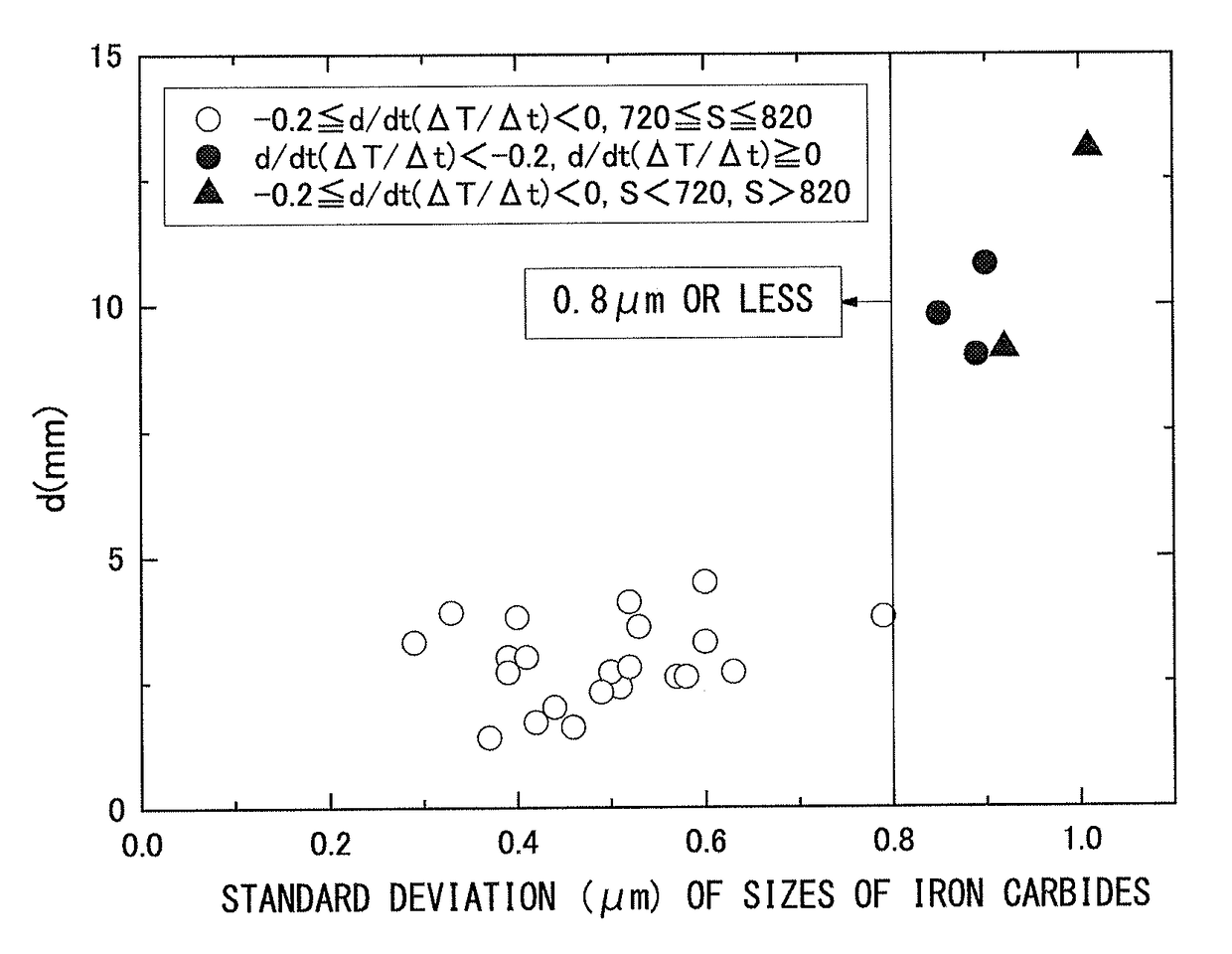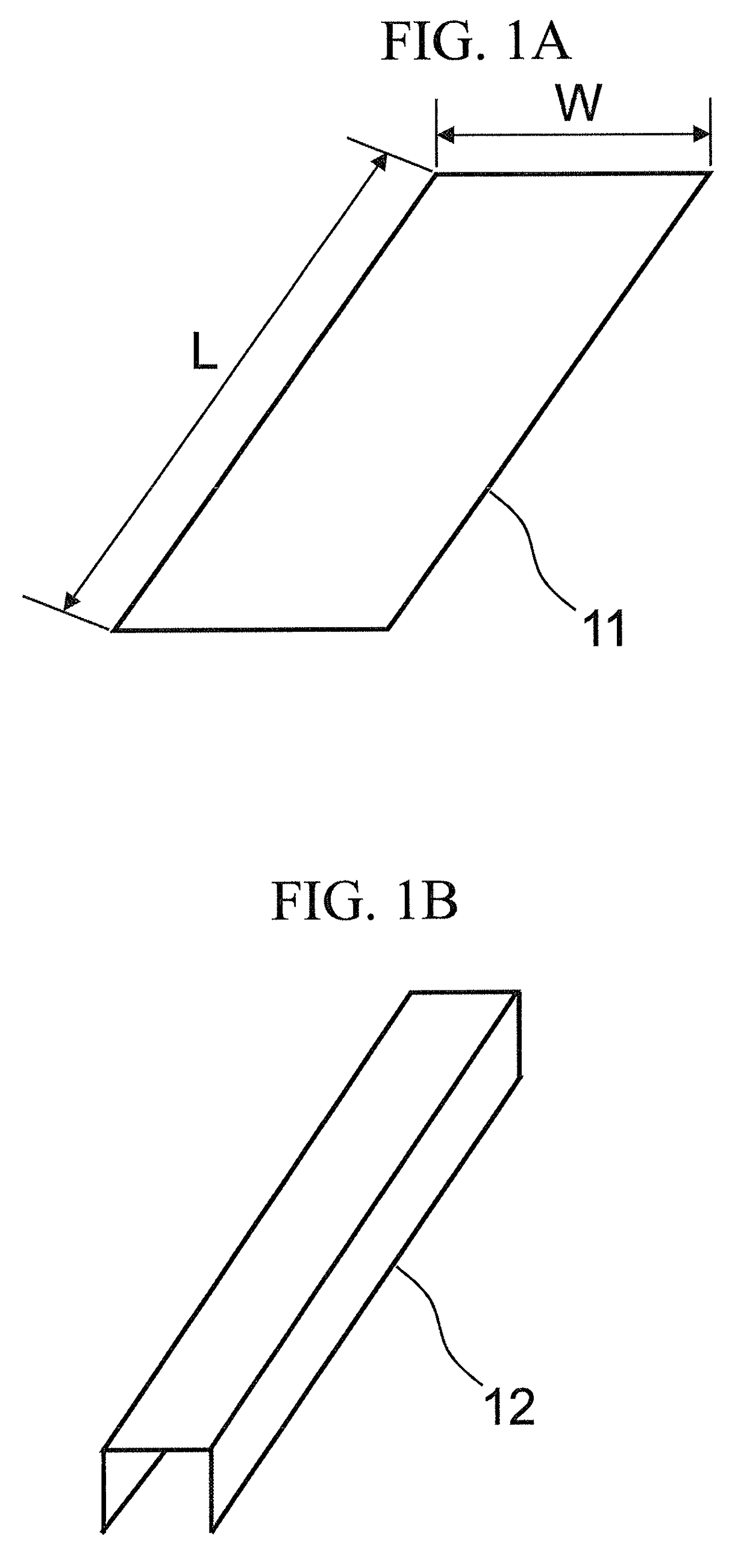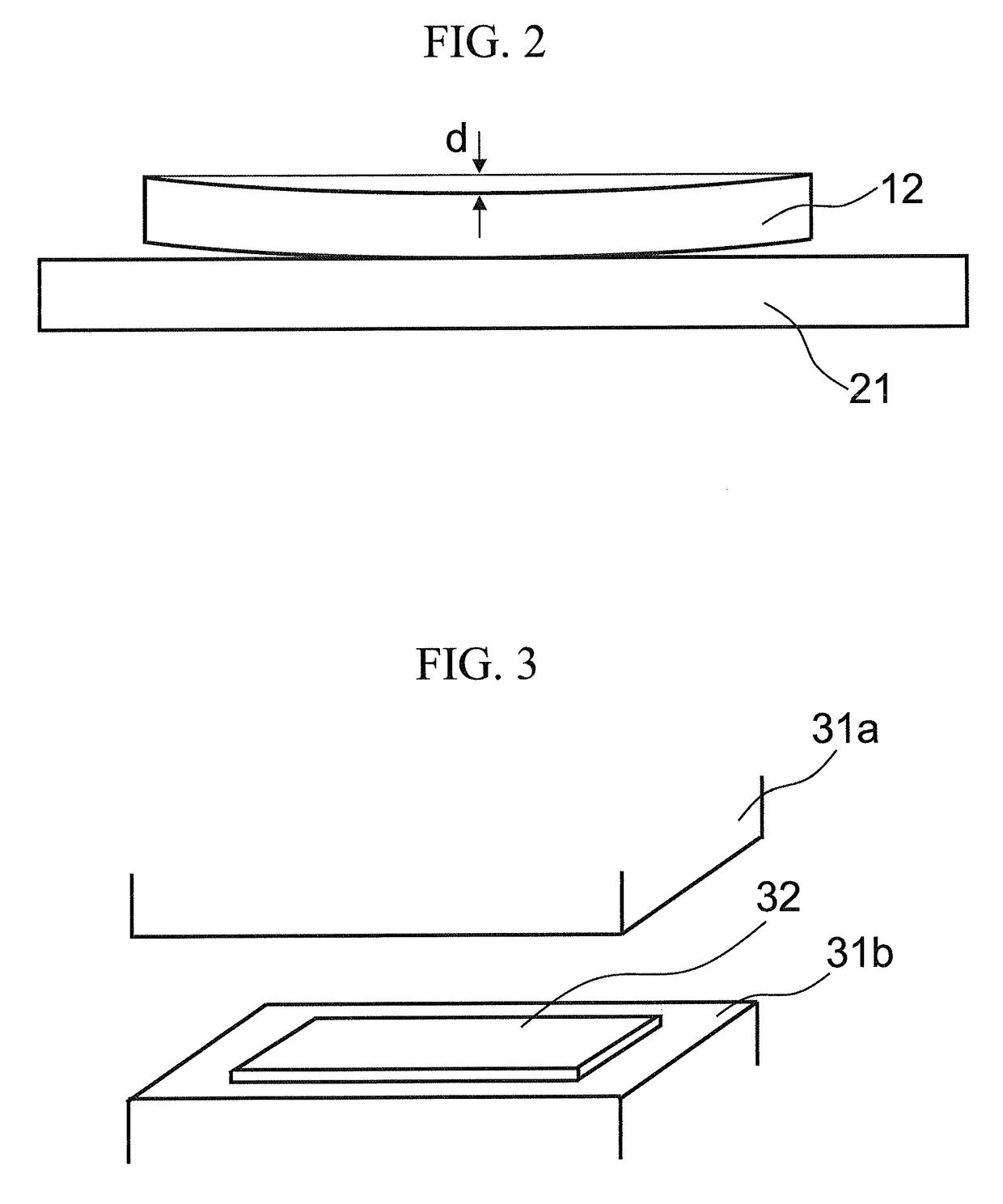Steel sheet for hot stamping member and method of producing same
a technology of hot stamping and steel sheets, which is applied in the direction of manufacturing tools, heat treatment equipment, and shaping tools, etc., can solve the problems of deterioration in shape fixability, difficult to obtain desired shape, and no examples of investigating steel sheets for hot stamping, etc., to achieve small defects, increase the application range of hot stamping components, and reduce the possibility of defects
- Summary
- Abstract
- Description
- Claims
- Application Information
AI Technical Summary
Benefits of technology
Problems solved by technology
Method used
Image
Examples
example 1
[0122]Steel pieces (steels) having chemical components as shown in Table 1 were obtained through steelmaking and casting. These steels were subjected to hot rolling, in which heating was performed to 1250° C. and a finish temperature was 910° C., and were coiled at a coiling temperature of 620° C. As a result, hot-rolled steel sheets having a thickness of 3.2 mm were obtained. These hot-rolled steel sheets were pickled and were cold-rolled. As a result, cold-rolled steel sheets having a thickness of 1.6 mm were obtained.
[0123]The above-described cold-rolled steel sheets were annealed for recrystallization under conditions shown in Table 2 to obtain steel sheets for hot stamping.
[0124]Under the condition x, a cold-rolled steel sheet was heated from 300° C. to 600° C. at a constant heating rate of 10° C. / s and then was heated to 800° C. at a constant heating rate of 2° C. / s. In this case, in both temperature ranges of from 300° C. to 600° C. and from 600° C. to 800° C., changes d / dt (...
example 2
[0137]Steel pieces (steels) having chemical components as shown in Table 4 were obtained through steelmaking and casting. These steels were treated under the same conditions as those of Example 1 to obtain hot-rolled steel sheets having a thickness of 3.0 mm. These hot-rolled steel sheets were pickled and were cold-rolled. As a result, cold-rolled steel sheets having a thickness of 1.2 mm were obtained.
[0138]These cold-rolled steel sheets were annealed for recrystallization under the conditions i, vii, and ix shown in Table 2 to obtain steel sheets for hot stamping.
[0139]Sizes of iron carbides which were contained in a region from a surface of the obtained cold-rolled steel sheet to a position which was distant from the surface of the steel sheet by 0.3 mm in the thickness direction (a ¼ thickness position of the steel sheet) were measured, and a standard deviation of the sizes of iron carbides was obtained. In addition, the above-described cold-rolled steel sheets were hot-stamped ...
example 3
[0145]Steel pieces (steels) having chemical components as shown in Table 6 were obtained through steelmaking and casting. These steels were treated under the same conditions as those of Example 1 to obtain hot-rolled steel sheets having a thickness of 2.5 mm. These hot-rolled steel sheets were pickled and were cold-rolled. As a result, cold-rolled steel sheets having a thickness of 1.2 mm were obtained.
[0146]These cold-rolled steel sheets were heated to 800° C. according to a temperature history illustrated in FIG. 7, were immediately cooled at an average cooling rate of 6.5° C. / s, and were dipped in a molten Al bath (containing 10% of Si and unavoidable impurities) at 670° C. Then, the cold-rolled steel sheets were taken out from the molten Al bath after 5 seconds. The deposit amount of a plating layer was adjusted using a gas wiper, followed by air cooling to room temperature.
[0147]When the steel sheet temperature and the time after the start of annealing (time elapsed after the s...
PUM
| Property | Measurement | Unit |
|---|---|---|
| thickness | aaaaa | aaaaa |
| thickness | aaaaa | aaaaa |
| thickness | aaaaa | aaaaa |
Abstract
Description
Claims
Application Information
 Login to View More
Login to View More - R&D
- Intellectual Property
- Life Sciences
- Materials
- Tech Scout
- Unparalleled Data Quality
- Higher Quality Content
- 60% Fewer Hallucinations
Browse by: Latest US Patents, China's latest patents, Technical Efficacy Thesaurus, Application Domain, Technology Topic, Popular Technical Reports.
© 2025 PatSnap. All rights reserved.Legal|Privacy policy|Modern Slavery Act Transparency Statement|Sitemap|About US| Contact US: help@patsnap.com



